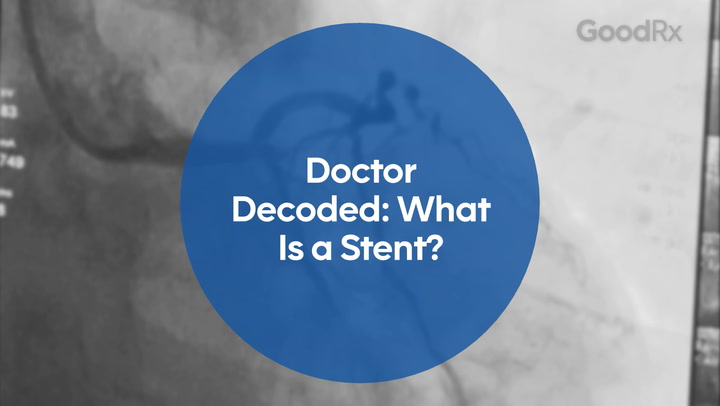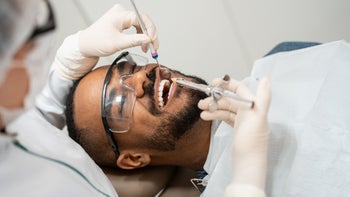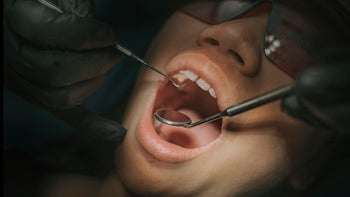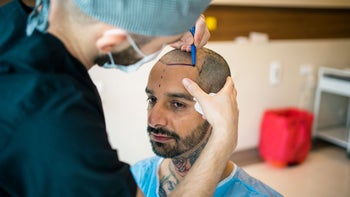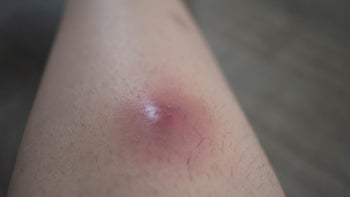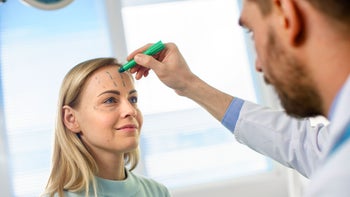How Much Does an Eyelid Lift Cost?
Key takeaways:
Eyelid lift surgery can improve a person’s vision and appearance.
There are different forms of eyelid surgery so it’s important to identify your goals.
While eyelid lifts are expensive — the average cost was $4,120 in 2020 — there are ways to pay for them over time.
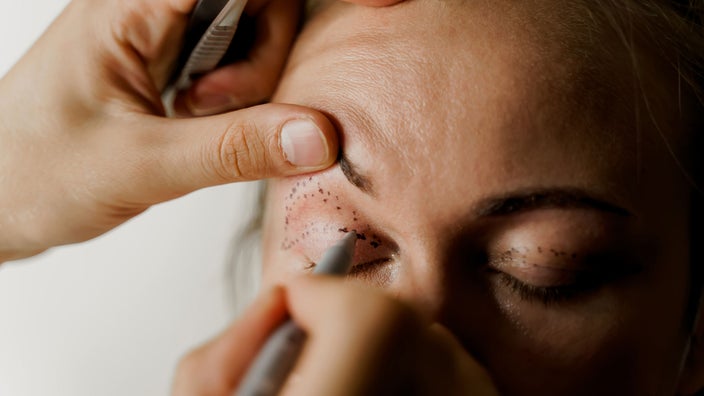
Whether from aging or genetics, sometimes the skin around people’s eyes begins to sag and droop. To fix the issue, some people have an eyelid lift. It’s a very common procedure, second only to nose reshaping. But, it’s not usually covered by insurance, unless you need an eyelid lift for medical reasons, like to improve your vision.
What is eyelid lift surgery?
An eyelid lift, also known as a blepharoplasty, is a cosmetic surgical procedure that removes excess skin and tissue from above or below the eye.
Many people have eyelid lifts for cosmetic reasons, that is, to improve appearance. But often, drooping skin around the eyes affects a person’s vision. In these cases, eyelid lifts (and sometimes, brow lifts) can help improve vision.
Search and compare options
Typically, people have both eyes operated on at once and are able to leave the same day to recover at home.
There are three types of cosmetic eyelid lift surgeries available: upper eyelid, lower eyelid, and double eyelid. Your eyelid specialist will recommend the best type of surgery for you based on your unique eye shape and what you’re hoping to achieve by having the surgery.
How much does an eyelid lift typically cost?
According to the American Society of Plastic Surgeons, the average cosmetic eyelid
lift costs $4,120. That doesn’t include anesthesia or operating room fees. And a clinic’s location and the expertise and experience of the surgeon can make a big difference in the price. That applies to the anesthesiologist’s fees as well.
The cost can also be higher in more expensive cities or areas where demand for the surgery, or for surgeons, is high.
The type of procedure you have done and where you have it done are two factors that affect cost. For example, Cytryn Cosmetic Surgery in Maryland usually charges between $2,500 and $3,000 for a double eyelid surgery.
Read more like this
Explore these related articles, suggested for readers like you.
Factors affecting eyelid lift costs
Along with the baseline fee, there are often other related fees that can add up quickly. Other eyelid surgery costs include:
Consultation fee: This is the fee for meeting with the plastic surgeon to decide whether to proceed with the eyelid lift, which is sometimes applied to your surgery fee.
Anesthesia fees: This represents the cost of the drugs that will put you under for the procedure, as well as the fee charged by the anesthesiologist.
Hospital or surgical facility costs: Your plastic surgeon may need to perform the procedure at an offsite location, which will cost you more.
Medical tests: Some people often undergo bloodwork or other tests before their surgeries.
Medication: Most prescriptions for postsurgical pain medication, antibiotics, eye drops and wound care supplies, are paid for out of pocket by the person.
Post-surgical corrections: You may need a corrective procedure if you are unhappy with your facelift results or have a complication.
Does insurance cover eyelid lifts?
In cases where the sagging eyelids block the person’s vision, insurance may pay for the procedure. This is true of Medicare, Medicaid, and private insurance plans. It’s typically easier to prove the surgery is medically necessary if the person has an upper eyelid lift, rather than a lower eyelid lift. A double eyelid lift, meanwhile, is almost always considered a cosmetic procedure, and so is typically not covered by insurance.
The rules to get an eyelift approved by insurance are strict, so it can be hard to get it approved. Medicare, for instance, considers the following factors before approving coverage for the procedure:
The eyelid or skin must interfere with vision that affects sight and/or daily living, such as reading and driving
Debilitating eyelid irritation
Difficulty fitting or wearing a prosthetic eye
Photographic evidence and documentation of a visual problem
You also may still have to pay out-of-pocket costs for the surgery.
For cosmetic eyelid lifts, people can often get financing through their plastic surgery clinic. They can also use a medical credit card, such as CareCredit. But you can’t use funds in a health savings account (HSA) or flexible spending account (FSA) to pay for cosmetic surgery. These accounts can only be used to pay for IRS-approved medical expenses.
Is an eyelid lift worth it?
Most people who undergo an eyelid lift are satisfied with the results. To make sure you have all the facts before going under the knife, ask your surgeon about possible side effects and likely results.
To have a cosmetic eyelid lift, you must fit certain health requirements. A plastic surgeon will evaluate your general health. They will pay extra attention to:
A history of eye conditions like dry eye, allergies, or glaucoma
Whether or not you smoke because nonsmokers have a better chance of healing well after surgery
Your health, specifically if you have diabetes, thyroid disease, or high blood pressure
Surgeons also look closely at a person’s anatomy. In some cases, an additional procedure — like a forehead lift or brow lift — may be necessary to get the desired result. Pre-surgery, some people may also need to have an eye exam or vision testing — especially if they are getting eyelid surgery for medical (not cosmetic) reasons. This is to support their insurance claim.
Are there cheaper alternatives to an eyelid lift?
There are nonsurgical options to improve the appearance of aging eyes, but they tend not to help much with saggy or baggy eyelids.
Nevertheless, depending on the issue, some of these procedures may help:
Botox injections may help lift the brow or smooth out crow’s feet at the eye’s outer edge depending on where the botox is injected. But beware, botox that relaxes muscle to smooth lines on the forehead can mean you won’t be able to lift your brows, making droopy eyelids worse instead of better.
Dermal fillers can add volume to skin, plumping areas around the eye that are sagging or drooping.
Skin resurfacing, around the eye with laser or chemical peels, can tighten skin and soften lines around the eyes. But, it should not be used on eyelids.
Radiofrequency procedures may stimulate collagen production and plump the skin around the eyes, but again, this is not an option for the eyelids.
How long does an eyelid lift last?
Typically, upper eyelid lifts can last anywhere from 5 to 7 years to lifelong. Sometimes, the surgery needs to be repeated after several years to maintain results. A lower eyelid lift usually offers very long-lasting results, often permanent.
The bottom line
Eyelid lift procedures are a common type of cosmetic surgery that not only improves physical appearance but can also improve vision and eye health for many people. The cost of these surgeries can be high though, so it’s important to carefully research your options. That starts with finding a plastic surgeon who understands your desires and expectations. Then, you should get an estimate of all the costs involved so you can prepare your finances for this procedure.
Why trust our experts?



References
Albert Cytryn Eyelid and Facial Plastic Surgery. (n.d.). Asian eyelid surgery.
American Board of Cosmetic Surgery. (2020). Are radiofrequency treatments really safe?.
American Society of Plastic Surgeons. (n.d.). How much does eyelid surgery cost?.
American Society of Plastic Surgeons. (n.d.). What is eyelid surgery?.
American Society of Plastic Surgeons. (n.d.). Who is a good candidate for eyelid surgery?.
Centers for Medicare & Medicaid Services. (2021). Blepharoplasty, eyelid surgery, and brow lift.
Morgenstern Center for Orbital & Facial Plastic Surgery. (n.d.). How long do eyelid surgery results last?.
Plastic Surgery Statistics Report. (2020). Top 5 cosmetic surgery procedures.
Schusterman, M. (2017). Three things you should know before getting an eyelid lift. American Society of Plastic Surgeons.
Turbert, D., et al. (2022). Visual field test. American Academy of Ophthalmology.















